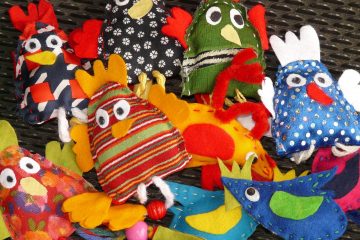Do your learners know each other’s names? Bear with a bit of a long introduction, and keep reading to perhaps discover a new idea for fostering community + target language in the classroom.
After twenty years of teaching, when I go to a conference, I often choose presentations based on the presenter – something I do not suggest for young teachers – or based on specific goals in the description. The reason is that of course, I want to learn something, and I know there are certain topics I can’t get enough of, and there are certain people who will be teaching me new things until my final day of teaching.
Donna Tatum-Johns is one of those people.

Actually, my very first introduction to the world of TPRS was with Donna and her colleague Sarah Moran. When I first moved to Louisville, I had no clue it was a hotbed of world language teaching awesomeness- in addition to Donna and Sarah, at the time, Jefferson County boasted the likes of Thomas Sauer, Megan Johnson-Smith, Kara Parker, and Nadine Jacobsen-McLean. I mean rockstars. And here I was, a newbie to Kentucky, my fourth year teaching, able to attend the Kentucky World Language Association’s conference and sit under these people! At that first conference, I registered to attend a TPRS workshop with Donna (one of Blaine Ray’s national presenters/trainers) and Sarah. It changed my teaching, and it changed my life.
So, every time I get a chance, if Donna’s name is on the agenda, I’m probably going to be there. I got that chance again at the KWLA conference this past fall, this time for a fabulous extended session called “All for One and One for All: Building Community in a Language Classroom.”
What is “the Name Game”?
Instead of going into deep detail of what Donna said and did in the session, I’ll quickly summarize and describe how it worked in my classroom, and of course, link to the post where Donna describes this activity as the “Name Game” (along with another called “Pass the Chicken”).
Inspired by another amazing TPRS teacher, Michele Whaley, Donna spent a significant amount of time in the first part of the school year helping her classes build community- that is, just getting to know each other. I came back from the conference challenged by this question – did my learners know each others’ names?
Spoiler alert: The answer was no. Now, in the cooperative where I teach, we only see each other once a week, but still, we were four weeks into the semester, and in this class of around 7 – yes, seven, most of these kids did not know each other’s names. It was time to fix it, Donna-and-Michele-style.
Essentially, in my interpretation of Donna’s game, I follow these steps:
- I ask all students to stand up, more or less in a circle, depending on the space.
- I look at a student across the room/circle from me, say “Hello, (name)” (in the target language) and ask a question based on what we’ve been learning. It might be “How are you?” or “What do you like to drink?” or “What is your favorite color?” – anything.
- I throw that student a stuffed animal. (Mine is usually José, an armadillo puppet with great fame.)
- That learner answers me, then looks across at a classmate (choosing someone nearby is not allowed), and does the exact same thing.
- It continues this way: “Hello, (name), (question in TL).” Learners cannot choose someone who has already spoken/received the stuffie. The last child throws it to me, asking me the same question.
When the group is familiar with the game, and names, and questions, you can really make this fun and interesting by speeding it up and by adding additional stuffies. Challenge the group to see how many they can be throwing at the same time – using the same order – without dropping any.
Then what happens?
Soon, my group knew each other’s names (and mine). I also watched them building fluency as they had to quickly think of and get out these questions in the target language. (Side note that many TPRS practitioners would not agree with this ‘forced output’ and that’s their prerogative, and yours; for my part, I don’t particularly care for this distinction or argument.) And I can testify from almost twenty years of teaching, even teenagers love a chance to play with an armadillo puppet.
Grab a stuffie, and get to building some community in your classroom!
Wait… who’s José?

In case you have the burning question we all do – who is José? – I’m glad you asked.
When I first started teaching in 2002, my father got me an armadillo puppet to use in my classroom, because he knew how much I love armadillos, and he knew how much kids love puppets. He’s a fantastic puppet. He can disco dance, hip-hop, do endless crunches, play hide-and-seek, and more. He can roll up in the ball and sail through the air, or just sit on a kids desk and look cute.
When he sent me José, my dad had created an entire backstory for him. He claimed that his name was José Cansaco (not Canseco) and that he played professional baseball as first base. Not as the first baseman, but as first base. (Get it… saco…) He made him a baseball card. In the card photo, José Canseco is sliding into the base and José Cansaco is leaping in the air in fright, as armadillos are wont to do (it’s very cute). My dad claimed this was why José was sent to the minors. He just wasn’t cutting it when the game got tough.
Yep, that’s my dad. Today would have been his 77th birthday. He died 8 1/2 years ago. It would honor us both if you’d take a look at the eulogy I gave at his funeral.




I so love the stuffies game, and I’m so glad to see you sharing it here!! It helps bond folks, especially when they have to get the attention of the person they’re throwing to by checking to see whether they’re listening. The “quick draw” name is a follow-up: walk until the music stops, then look at another person. If that person is also looking toward you, the first one to say the other’s name (and maybe a verb/adjective/etc later in the year) stays up. I am trying to figure out a way to make these work for online classes…
I love your Jose connection. Creating a background story shows your dad understood the power of communication and connection, and he obviously shared that wisdom and strength with you. But also…sharing his wisdom helps us remember the power of story to connect. Last year, my students were in love with two stuffed animals who started to develop background stories — now I’m inspired to make those stories be even more complete. Thank you!
Thanks for this great comment, Michele! We’d all love to hear how you develop new ways to engage online learners, too. It’s amazing how even older students engage with this sort of thing – the whole Jeffrey el pingüino mascot for Musicuentos came out of a character my students invented out of whole cloth in my first weeks of storytelling teaching!